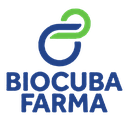Executive Secretary

VIII International Symposium on Chemistry and Pharmaceutical Sciences
SICF
VIII Symposium "Design, Obtaining and Development of Drugs"
Abstract
Interferons are glycoproteins that different cell types produce in response to stimuli from infectious organisms such as viruses, bacteria, fungi, and parasites. At the Center for Genetic Engineering and Biotechnology, a fermentation process is being developed to obtain the IFNα2b-hr protein, using the LE392 strain of Escherichia coli, under the control of the tryptophan promoter and the ampicillin resistance gene as a selection marker. This process uses a complex culture medium that contains components of animal origin. Currently, the regulatory entities of the first world prohibit or limit the use of β-lactam antibiotics and the use of compounds of animal origin in culture media. For this reason, experimental designs were carried out at the sieve level, which allowed the implementation of the BL21 (DE3) strain and kanamycin as a selection marker in the process. From this new genetic construction, the culture conditions for the inocula were established at 28 °C and 12 h of culture, without the addition of tryptophan to the medium. Subsequently, the composition of a chemically defined medium supplemented with the amino acid serine was formulated, without affecting the current results of cell growth and expression percentage of the IFNα2b-hr protein. This new medium was evaluated at a fermenter scale of 3,5 L of effective volume, reaching a concentration of the protein of interest of 278,14 ± 10,12 mg/L, higher than that obtained at the shaker level.
Resumen
Los interferones son glicoproteínas que distintos tipos de células producen como respuesta a estímulos de organismos infecciosos tales como virus, bacterias, hongos y parásitos. En el Centro de Ingeniería Genética y Biotecnología se desarrolla un proceso fermentativo para la obtención de la proteína IFNα2b-hr, utilizando la cepa LE392 de Escherichia coli, bajo el control del promotor triptófano y como marcador de selección el gen de resistencia a ampicillina. Este proceso emplea un medio de cultivo complejo que contiene componentes de origen animal. Actualmente, las entidades regulatorias del primer mundo prohíben o limitan el uso de antibióticos β-lactámicos y el empleo de compuestos de procedencia animal en los medios de cultivos. Por tal motivo, se realizaron diseños experimentales a nivel de zaranda, que permitieron implementar en el proceso, la cepa BL21 (DE3) y kanamicina como marcador de selección. A partir de esta nueva construcción genética, se establecieron las condiciones de cultivo para los inóculos de 28 °C y 12 h de cultivo, sin adición de triptófano al medio. Posteriormente, se formuló la composición de un medio químicamente definido suplementado con el aminoácido serina, sin afectar los resultados actuales de crecimiento celular y porcentaje de expresión de la proteína IFNα2b-hr. Este nuevo medio fue evaluado a escala de fermentador de 3,5 L de volumen efectivo, alcanzándose una concentración de la proteína de interés de 278,14 ± 10,12 mg/L, superior a la obtenida a nivel de zaranda.
About The Speaker

Ing Reinier

Discussion




